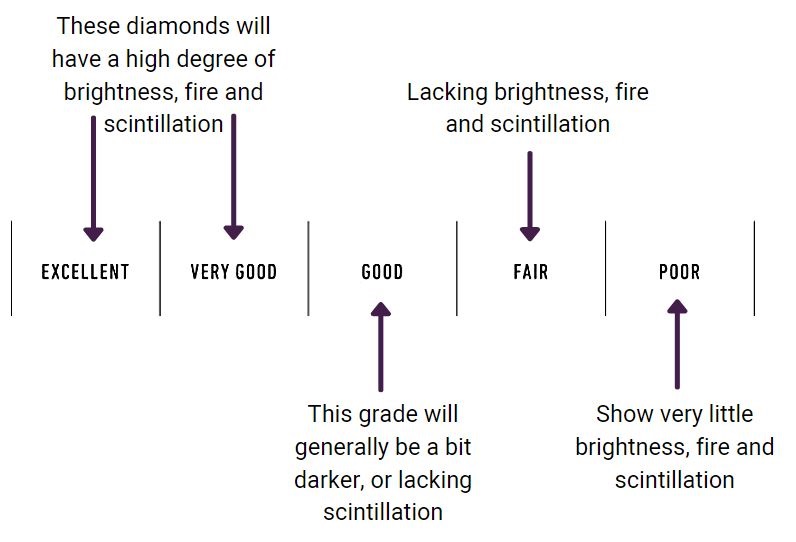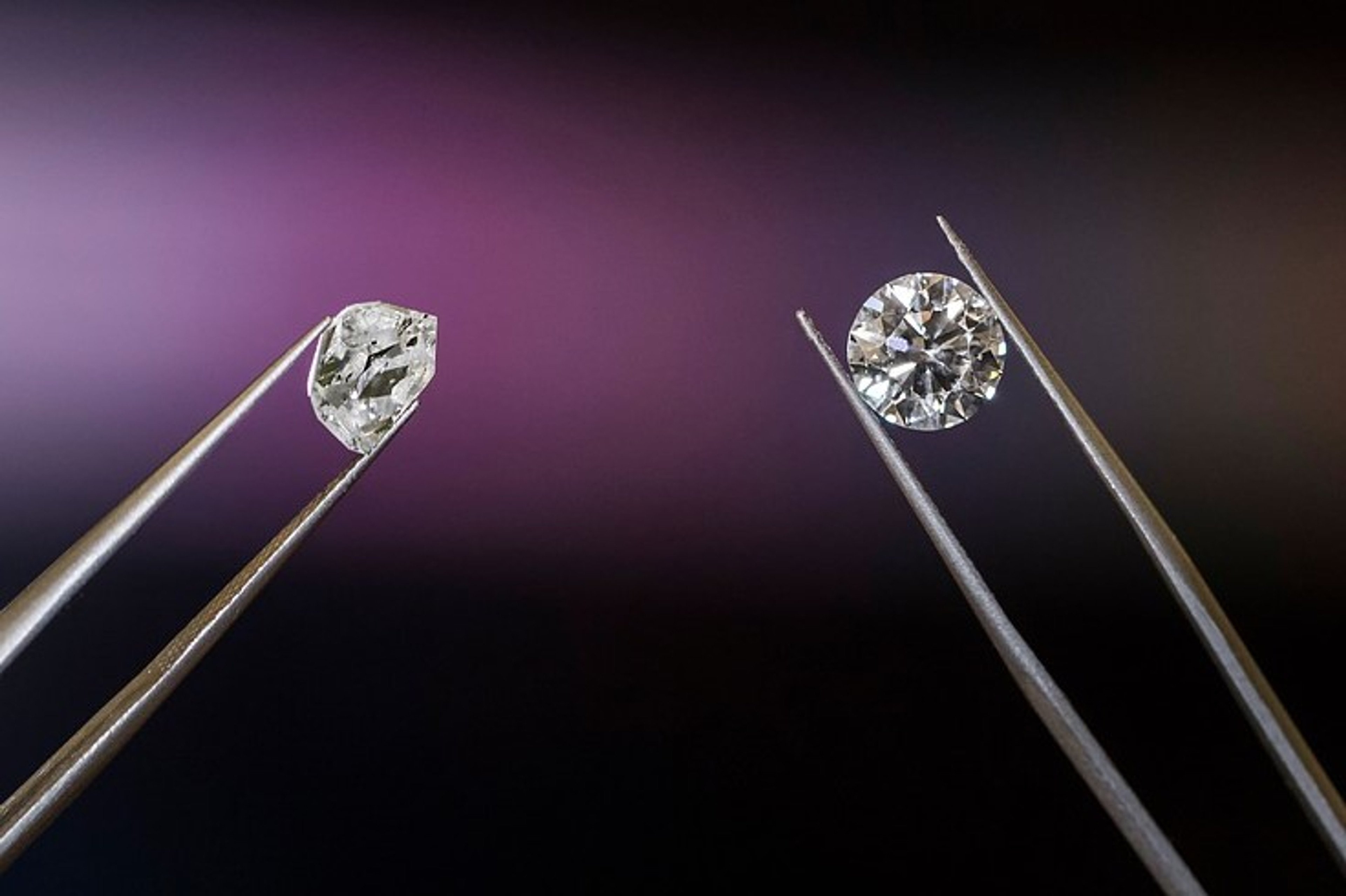The 4 C’S: Cut, Color, Clarity & Carat.
It is the universal scale created by the Gemological Institute of America (GIA) in the 1940’s. Before that, diamond sellers had their own unique rating systems. No two were alike, and the consumer had to trust the seller. You can imagine just how confusing that would have been. With the creation of the 4 C’s, buyers were able to choose what diamond quality is important to them and decide if the stone and the price was justified. It also helped take out any guessing one may have on the quality of a diamond.
Cut
The cut of the diamond is said to be the most important. A diamond cut grade is determined by how well a diamond’s facets interact with light. Precise artistry and workmanship are required to fashion a stone so its proportions, symmetry and polish deliver the magnificent return of light only possible in a diamond. GIA grades diamond cut on a scale of excellent to poor, by calculating the proportions of the diamond facets and studying how successfully a diamond interacts with light to create desirable visual effects, such as:
- Brightness: Internal and external white light reflected from a diamond
- Fire: The scattering of white light into all the colors of the rainbow
- Scintillation: The amount of sparkle a diamond produces, and the pattern of light and dark areas caused by reflections within the diamond
Stones can be cut too shallow or too deep which will have an impact on the brilliance and sparkle of the stone. A poorly cut stone will not reflect the light as well as a stone which is cut and rated as excellent. Note, size does not matter on the rating of the cut. A poorly cut 5 carat diamond can seem flat and lifeless, while a 1 carat diamond which is cut properly can radiate fire. The cut scale ranges from excellent to poor.

Color
When describing the color of a diamond, it seems a little backwards, but the highest rated diamond colors are those that are clear, or colorless. The GIA started with the letter D for colorless (Why not start with A, you ask? The main reason was color grading has been used since ancient times and those scales used rating that started with A’s or 1’s. In order to make sure that there was no overlapping, they decided to start with a fresh letter – hence the D.) A “D” rated colorless stone is most expensive. Many of these color distinctions are so subtle that they are invisible to the untrained eye; however, these distinctions make a very big difference in diamond quality and price. That is why it is important the diamond is GIA rated so that you know exactly the color you are receiving from a qualified expert.
You may have seen the trend of Canary yellow diamonds in many engagement rings. When the color inside the diamond is so strong, then the diamond is no longer considered a tinted, colored white diamond, but rather a full-fledged fancy colored diamond. When you are purchasing a fancy colored diamond, the more vivid the color, the more the diamond is worth. Fancy diamonds come in an array of colors and can be stunning.

Clarity
Clarity measures how many internal and external flaws the diamond may have. A flaw which is located internally is termed an ‘inclusion.’ A flaw that is on the outside of the diamond is called a ‘blemish.’ Unless the diamond is grown in a lab, Mother Nature probably left her mark on some part of this stone. There are small cracks, mineral deposits and other things that are a part of this natural stone. While there are diamonds which have been found to be flawless, they are both very rare and expensive. Since many blemishes and inclusions aren’t visible to the naked eye, trained diamond graders follow the GIA Diamond Clarity Scale to give stones the following ratings:
- Flawless (FL) - No inclusions or blemishes can be seen under 10x magnification.
- Internally Flawless (IF) - No inclusions can be seen under 10x magnification.
- Very, Very Slightly Included (VVS1 and VVS2) - Inclusions are so minor that they’re difficult for a skilled grader to see under 10x magnification.
- Very Slightly Included (VS1 and VS2) - With effort, inclusions can be seen under 10x magnification, but they’re typically characterized as minor.
- Slightly Included (SI1 and SI2) - Inclusions are visible under 10x magnification.
- Included (I1, I2, and I3) - Inclusions are obvious under 10x magnification and can affect the diamond’s transparency and brilliance.
Another thing to remember when considering diamond clarity, is that blemishes and inclusions near the side facets (aka flat surfaces) of a diamond are less noticeable than those located in the center of the stone.

Carat
The carat weight refers to the actual size of the diamond. Each carat is weighed and conveyed in 100-point increments. This allows very precise measurements to the hundredth decimal place. Diamonds weighed under one carat, are usually referred to by points. (So, a quarter carat diamond could be called a “25 pointer”.) Diamond weights greater than one carat are expressed in carats and decimals. A 1.35 carat stone would be described as ‘one point three five carat.’

Have a question? We can help!
Gage Diamonds is Chicago's premier jewelry showroom and online retailer of engagement rings, wedding bands, and fine jewelry. We offer a selection of dazzling handpicked diamonds, including certified natural diamonds.
We’re committed to helping you find the ring of your dreams. For inspiration, browse our website or set up an appointment with a member of our trusted staff at our in-person showroom.
We offer no-credit-needed financing – feel free to apply and get your approval within 24 hours!
Pay over time, because love shouldn’t wait.

